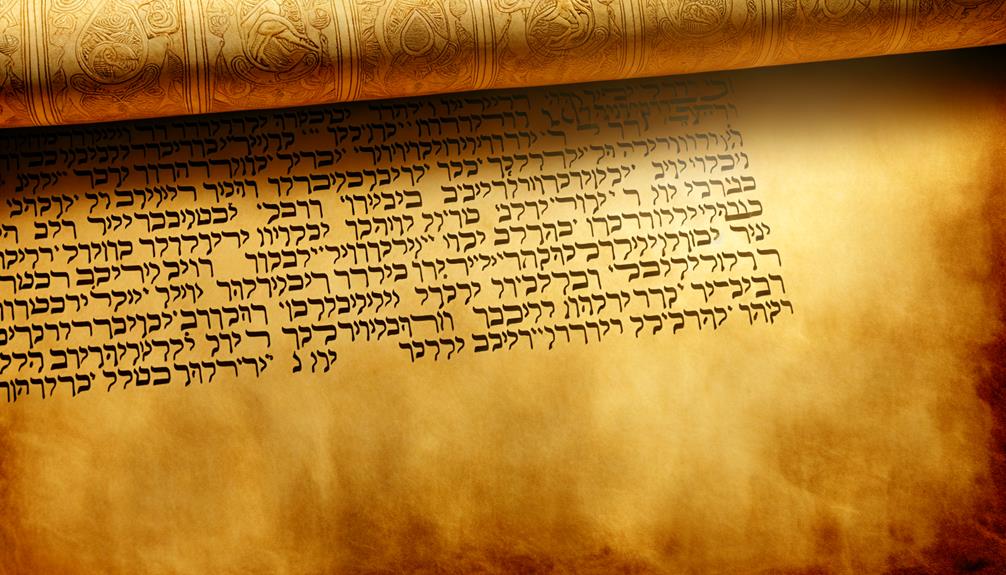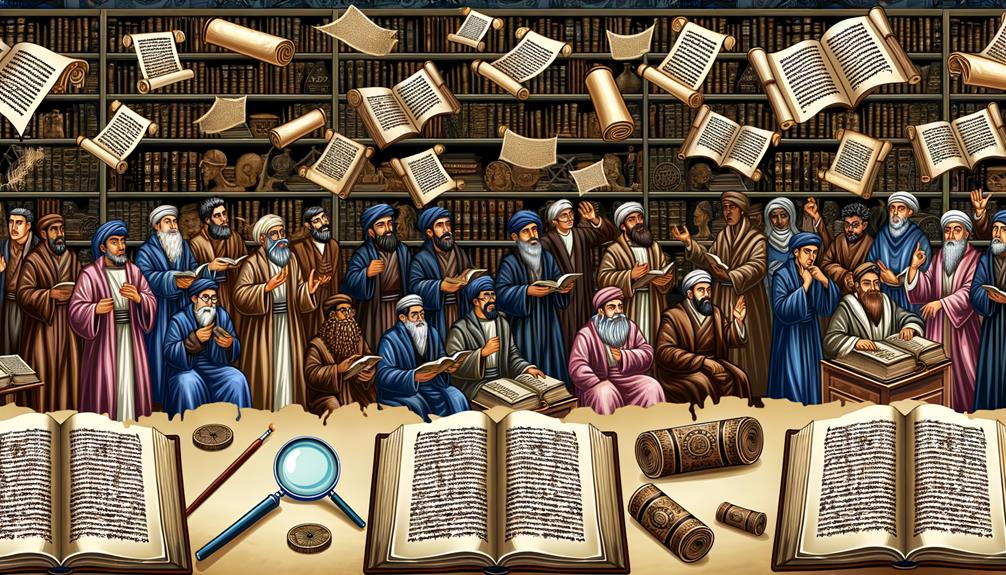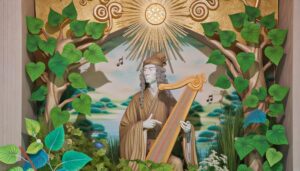Michtam Meaning in the Bible: Golden Psalm
The term ‘Michtam,’ found in the headings of six Psalms attributed to David (Psalms 16, 56-60), presents a multifaceted meaning rooted in the Hebrew “katam,” suggesting ‘engraved,’ ‘golden,’ or ‘hidden.’ This term indicates permanence, precious value, or concealed wisdom, reflecting its sacred significance. Historically, Michtam Psalms express deep theological themes of divine protection and personal lamentation, integral to Hebrew worship practices.
The lyrical and musical nature of these Psalms enhances their liturgical role and emotional depth. Exploring Michtam further reveals profound insights into early Israelite spirituality and Davidic influence in biblical poetry.

Michtam Meaning in the Bible: Definition, Usage, and Spiritual Significance
| Aspect | Details |
|---|---|
| Term | Michtam (Hebrew: מִכְתָּם) |
| Meaning | Uncertain; possibly “golden,” “engraved,” or “secret” |
| Biblical Reference | Titles of Psalms 16, 56–60 |
| Usage | A musical or poetic term in Psalm headings |
| Symbolism | Precious truths, deep meditation, or sacred writing |
| Spiritual Insight | May reflect deeply personal or enduring prayers and divine trust |
| Interpretive Theories | Golden psalm, secret prayer, engraved writing of lasting value |
Occurrences of Michtam

In the canon of the Hebrew Bible, the term ‘Michtam‘ appears uniquely in the headings of six Psalms—Psalm 16 and Psalms 56 through 60—prompting scholars to explore its etymology and connotations within these poetic texts.
These Psalms, attributed to David, are distinguished by the inclusion of ‘Michtam’, suggesting a specific literary or liturgical function. The placement of ‘Michtam’ within these headings offers critical insight into the thematic and structural elements of the Psalms.
Contextually, these Psalms often convey profound reflections on divine protection and personal lamentation, indicating that ‘Michtam’ may imply a special type of composition or liturgical usage.
The recurrence of this term within these specific Psalms underscores its potential significance in ancient Hebrew worship practices.
Linguistic Roots

The term ‘Michtam’ is derived from the Hebrew root ‘כָּתַם’ (katam), which has been interpreted variously to mean ‘engraved’, ‘golden’, or ‘hidden’, reflecting its potentially multifaceted significance in the Psalms.
This linguistic depth invites several considerations:
- Engraved: Suggests a lasting, immutable quality, possibly indicating a sacred inscription.
- Golden: Implies value and preciousness, aligning with the revered nature of the Psalms.
- Hidden: Points to a sense of mystery or concealed wisdom within the text.
Exploring these interpretations underscores the complex layers of meaning embedded in the term ‘Michtam’, deepening our understanding of its biblical use.
Historical Context

The term ‘Michtam,’ found in the superscriptions of several Psalms attributed to David, offers a window into the liturgical practices and theological expressions of ancient Hebrew worship.
The Davidic authorship of these Psalms underscores their historical and cultural resonance, reflecting the personal and communal struggles of Israel. Over time, the liturgical use of Michtam evolved, potentially indicating shifts in religious practices and doctrinal emphasis within the Israelite tradition.
Ancient Hebrew Psalms
Although the precise origins of the term ‘Michtam’ remain somewhat elusive, an examination of ancient Hebrew psalms reveals its significance within the broader historical and cultural context of Israelite worship practices.
These psalms, often composed in the original Hebrew language, served as essential expressions of faith and devotion. The role of these psalms encompassed various aspects:
- Liturgical Use: Employed in temple worship and communal gatherings.
- Theological Reflection: Articulated key theological concepts and beliefs.
- Personal Devotion: Provided a medium for individual prayer and meditation.
Understanding these dimensions helps us appreciate how psalms, including those labeled ‘Michtam,’ functioned within ancient Israel’s spiritual life.
Davidic Authorship Significance
David’s association with the authorship of several psalms, including those termed ‘Michtam‘, underscores the profound historical and theological significance attributed to these compositions within the Israelite tradition.
The Hebrew term מִכְתָּם (Michtam) appears in the titles of Psalms 16 and 56-60, suggesting a special literary or musical designation. David’s role as a shepherd, warrior, and king infused his psalms with rich experiential and spiritual depth, reflecting his intimate relationship with God.
Historically, these compositions provided insight into the socio-political and religious milieu of ancient Israel.
The Davidic authorship lends authority and authenticity, resonating through centuries of Jewish and Christian liturgical practices and theological reflections.
Understanding David’s influence is essential for appreciating the Psalms’ enduring legacy.
Liturgical Use Evolution
From the early Israelite temple worship to contemporary religious practices, the use of ‘Michtam’ psalms has undergone significant liturgical evolution, reflecting shifts in theological emphasis and communal identity.
Originating from the Hebrew term מִכְתָּם (Michtam), these psalms were likely integral to ancient rites and sacred ceremonies, embodying profound spiritual lamentation and thanksgiving.
Over centuries, their liturgical application evolved:
- Temple Worship: Central to rituals, expressing collective piety.
- Post-Exilic Period: Adapted to synagogue services, reflecting exile experiences.
- Medieval Liturgy: Incorporated into monastic traditions, emphasizing personal devotion.
This progression underscores the dynamic interplay between scripture, worship, and the evolving faith community.
Musical Notation Theory

In examining the musical notation theory associated with the term ‘Michtam,’ it is essential to explore the ancient musical symbols that the psalmists employed, often embedded within the Hebrew script.
Understanding these notation methods offers insights into the Psalmist’s approach to musical structure, revealing a sophisticated system of rhythm and melody that underpins the spiritual and poetic dimensions of the Psalms.
This analysis not only enriches our comprehension of biblical musicology but also illuminates the intricate relationship between text and tune in ancient Hebrew worship practices.
Ancient Musical Symbols
Ancient musical symbols, particularly those found in biblical texts, provide essential insights into the complex systems of musical notation and performance practices in antiquity. These symbols, inscribed in original Hebrew manuscripts, reveal the intricate relationship between text and melody. Their study discloses:
- Neumes: Early forms of notation that indicate melodic contours rather than specific pitches.
- Cantillation Marks: Symbols guiding the chanting of scriptural readings, embedded with interpretive nuances.
- Lyre and Harp Notations: Specific symbols indicating stringed instruments, reflecting their prominence in worship.
Understanding these symbols within their historical and linguistic contexts deepens our appreciation for the sophisticated musical traditions of ancient Israel.
Psalmist’s Notation Methods
The Psalmist’s notation methods exhibit a sophisticated interplay between linguistic elements and musical expression, meticulously crafted to convey theological and emotional depth through meticulous scriptural exegesis and performance.
In Hebrew, notations such as *shiggaion* and *michtam* encapsulate complex emotional states and divine mysteries. These terms guide the cantor in modulating pitch and rhythm, facilitating a profound spiritual connection.
The Psalms often integrate *te’amim* (cantillation marks) that serve dual purposes: elucidating the text’s syntactic structure and providing melodic cues. This dual functionality underscores an intrinsic unity between verbal articulation and musicality, ensuring the Psalms are experienced as holistic acts of worship.
Such notations reflect an ancient tradition of preserving and enhancing sacred texts through precise musical articulation.
Musical Structure Analysis
Delving into the intricacies of musical notation theory within the Psalms, one must consider the symbiotic relationship between Hebrew linguistic nuances and the prescribed melodic contours.
Ancient Hebrew psalmody, encoded within terms such as ‘Michtam,’ is rich in both semantic and phonetic elements, influencing musical structure. The notation reflects a complex interplay of textual and musical elements, essential for authentic performance and interpretation.
- Linguistic Cadence: Hebrew’s rhythmic patterns guide melodic phrasing.
- Textual Emphasis: Specific words are accentuated musically to convey theological significance.
- Melodic Contours: Musical lines mirror the emotional landscape of the text.
This analysis underscores the depth of scriptural music, embedded deeply in its original linguistic and cultural context.
Literary Interpretation

Examining the term ‘Michtam‘ within its original Hebrew context reveals a complex interplay of literary and theological nuances that have intrigued scholars for centuries.
Rooted in the Psalms, ‘Michtam’ is often translated as “golden” or “inscription,” though its exact meaning remains elusive. The term appears in the superscriptions of six Psalms (16, 56-60), each imbued with profound emotional and spiritual intensity.
Linguistically, ‘Michtam’ may derive from the root *k-t-m*, suggesting something hidden or precious. Theologically, it signifies a sacred, perhaps secretive communication with God.
Contextual analysis reveals that these Psalms frequently emphasize divine protection and resilience amidst adversity, offering rich material for exegetical study and deepening our understanding of biblical poetics.
Symbolic Meanings

Building on the literary interpretation, the symbolic meanings of ‘Michtam’ extend beyond its linguistic roots to encapsulate themes of divine mystery and spiritual fortitude, reflecting the profound emotional depths present in these Psalms. The term, possibly derived from the Hebrew root ‘katham,’ suggests something precious or golden, indicating their treasured status.
Symbolically, ‘Michtam’ Psalms often embody:
- Resilience amid adversity: Highlighting unwavering faith during trials.
- Divine secrecy: Reflecting the hidden wisdom of God’s plans.
- Spiritual shelter: Offering a sense of divine protection and refuge.
These elements illustrate the intricate layers of meaning and the rich spiritual tapestry woven through the ‘Michtam’ Psalms, inviting deeper reflection and insight.
Scholarly Debates

Scholarly debates surrounding the term ‘Michtam‘ in the Bible often focus on its etymological origins, contextual usage, and theological implications. The Hebrew word ‘מִכԌָלם’ (Michtam) appears in the superscriptions of six Psalms (Psalms 16, 56-60), prompting extensive philological examination.
Some scholars propose that ‘Michtam’ may derive from a root meaning ‘to cover’ or ‘to inscribe,’ suggesting a hidden or profound composition. Contextually, these Psalms share themes of lament and trust in divine protection, leading others to argue that ‘Michtam’ denotes a specific literary or liturgical category.
Further complicating the discussion, ancient translations like the Septuagint render ‘Michtam’ variably, adding layers of interpretive complexity. This multiplicity of views underscores the term’s enigmatic nature and rich textual significance.
Theological Implications

The multifaceted scholarly debates surrounding the term ‘Michtam’ naturally lead us to contemplate its theological implications, particularly how these Psalms’ themes of lament and divine protection contribute to our understanding of faith and human suffering in the biblical narrative.
The Hebrew term מִכְתָּם (Michtam) appears in Psalms that often juxtapose mortal anguish with divine assurance, thereby illuminating several key theological motifs:
- Divine refuge: The psalms portray God as a sanctuary amid adversity.
- Human vulnerability: They underscore the fragility of human existence.
- Covenantal faith: Express a deep trust in God’s enduring promises.
These elements enrich our comprehension of the intricate relationship between human affliction and divine providence.
Michtam in Modern Studies

Recent academic inquiries into the term ‘Michtam‘ have revealed a rich tapestry of interpretations that draw from philological analysis, historical context, and theological frameworks.
Scholars have examined the Hebrew root *k-t-m*, suggesting connotations of engraving or permanence, thereby enriching our understanding of its application in the Psalms. Contextual studies indicate that ‘Michtam’ could denote a genre of poetic composition meant for liturgical or didactic purposes.
Additionally, comparisons with ancient Near Eastern texts have provided nuanced insights, proposing possible parallels with inscriptions found in Ugaritic and Akkadian literature.
This multidisciplinary approach enhances our grasp of ‘Michtam,’ emphasizing its multifaceted role within the biblical canon and its enduring theological significance.
Conclusion
In the symphony of biblical text, ‘Michtam‘ emerges as a multifaceted motif, weaving through scripture with enigmatic resonance. Its linguistic roots and historical context provide a backdrop, while musical notation theories and literary interpretations add layers of complexity.
Symbolically, Michtam embodies the interplay between divine mystery and human expression. Scholarly debates and theological implications further illuminate its significance. Consequently, Michtam remains a profound element in both ancient and modern biblical studies, a reflection of the enduring power of sacred language.






